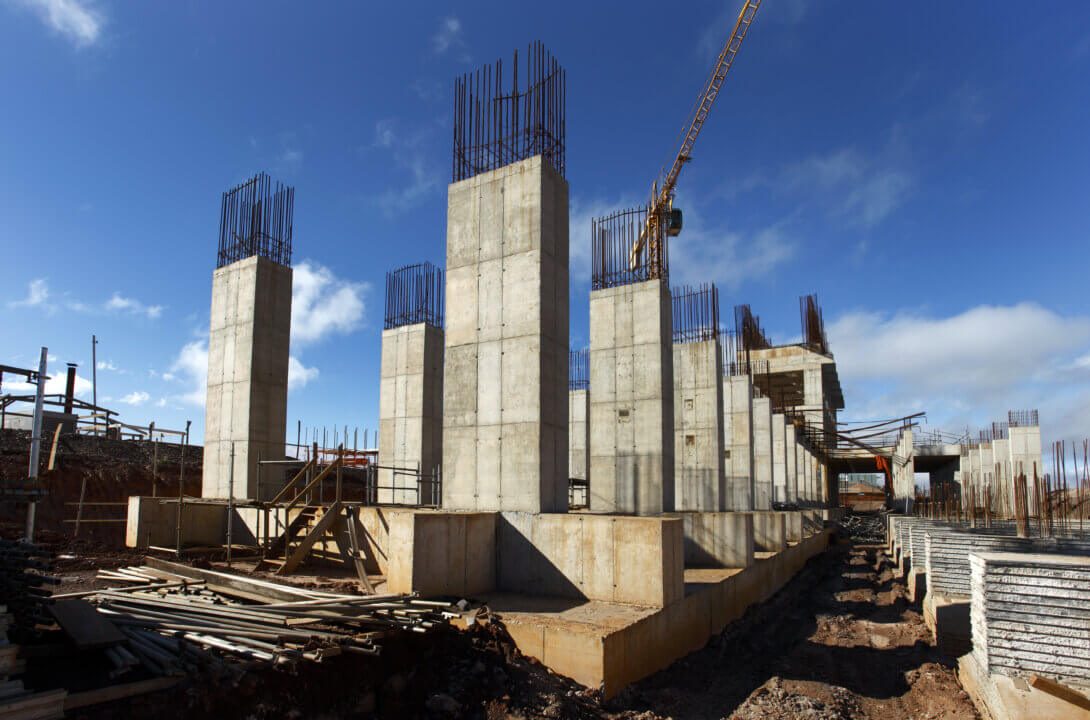
Steel structures have been widely used in construction because they have characteristics preferred by many architects and engineers for projects, in addition to being slender.
From the earliest works — such as Ironbridge in England, in 1779 — to the many modern buildings in cities, this material has always been associated with innovation for several reasons.
In this article, you'll learn more about it, its current applications, and the main benefits of adopting it. This way, you'll understand its importance for the construction industry!
Metal structures are those that use steel as the main construction material. Because it is durable, resistant and malleable, it is suitable for the construction of structures that need to support large loads, such as bridges, buildings, towers, offshore platforms and other types.
These structures are designed to withstand static and dynamic loads, such as wind, earthquakes, and service loads. Furthermore, they are composed of elements such as beams, columns, ties, and trusses, connected by welds or bolts.
Welded joints must be manufactured in the factory and are ideal for parts with complex geometries. Bolted joints, on the other hand, use two types of structures: standard, with low mechanical strength, and high-strength, for more demanding connections.
Steel is not uncommon in construction due to its physical properties. In addition to steel structures for homes, there are other common applications, including:
The use of steel in construction offers several significant advantages over conventional construction systems. To demonstrate this, we've outlined the main reasons to use it in your engineering and architectural projects. Check it out!
Steel allows for the creation of lighter, more slender structures, which offers greater freedom in the design and execution of architectural projects, which can be bold and striking.
Because it takes up less space compared to other structural materials, such as concrete, it means it can offer a larger usable area compared to other options.
It's an extremely flexible component and can be molded into various shapes and sizes, allowing for the creation of customized and unique structures. Therefore, it's recommended for adaptations, expansions, renovations, and changes of occupancy.
It can be easily combined with other materials, such as concrete, glass and wood, in addition to prefabricated materials, allowing the creation of hybrid structures that offer the advantages of each.
Its use can lead to a reduction in material waste of up to 25% and the optimization of labor, resulting in costs lower costs and greater construction efficiency.
Steel construction is generally faster than other methods because structures can be prefabricated and assembled on-site, reducing construction time by up to 40% compared to other methods. Not to mention, they're not affected by rain.
Because it is lighter than concrete structures, it means that the load on the foundations is lower, reducing the cost and time required to build the foundations.
If made with the right suppliers, the materials are manufactured in specialized industries, under controlled conditions, and with highly qualified labor, ensuring superior and consistent quality throughout the process industrial.
It allows the building owner to start generating revenue more quickly, as construction is accelerated compared to other methods. This means the return on invested capital is achieved in a shorter period of time.
Steel requires less space on the construction site compared to other construction methods, which allows for better organization and management of the building site.
One of the main concerns of the projects is environmental protection. The steel structures are 100% recyclable and can be disassembled and reused at the end of their useful life, making them a sustainable and environmentally friendly choice.
Speaking of which, the use of steel in construction can result in lower CO₂ emissions than other materials, such as concrete, making it a more sustainable option. Furthermore, it's less harmful to the environment because it reduces wood consumption on site.
The structures are manufactured with high precision, measured in millimeters, ensuring that the parts fit together perfectly, reducing the need for on-site adjustments and increasing building efficiency. This makes it easier to install frames, elevators, and much more.
Steel structures have long been a popular and versatile option in construction, offering numerous advantages over other materials. Therefore, they're worth considering for your projects.
Read others blog contents to stay up to date with the latest news about the sector and, if you liked it, share this article on social media to keep your friends up to date too!